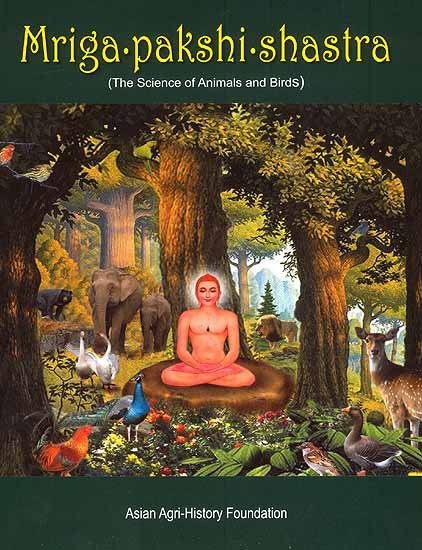Animal Kingdom (Tiryak) in Epics
by Saranya P.S | 2019 | 51,616 words | ISBN-10: 8190396315 | ISBN-13: 9788190396318
An English study the Animal Kingdom (Tiryak) in Epics.—The present thesis is based entirely on Ramayana and Mahabharata although an attempt is made to analytically compare the Animal kingdom with Mriga-pakshi-shastra—‘The ancient Indian science of of Animals and Birds’....
Chapter 4.6 - The Bull in the Epics
There are quite a number of references of this animal in Ramayana.[1]
Bullocks can be white, red, black, grey and also of different colours. They are strong and powerful with two horns, long tails and big humps. They have beautiful, glittering bodies. They are the main support to cultivators. Some bullocks have stout stomachs. They generally eat gingelly and groundnut cakes, grass, straw and leaves. They are easily trainable. The time of their prime youth begins in the 4th or 5th year. They become sexually more aroused in winter. They follow cows, crying aloud to cohabit with them. When the cows conceive, they eat less food and they walk slowly. Foam often comes from their mouths. Soon after their birth the calves start sucking the milk of their mother. By the time they are 5 or 6 months they start jumping and play about. After the 6th they eat grass and straw, even as they drink their mother's milk. The calves can start working in the fields when they are 4 years old. There are seven varieties of bullocks[2].
The first variety is called Ukshan. They are pure white. They have stout horns. They are patient and beautiful. They are intelligent in their work. They are used for different kinds of work. They can drag and carry heaven burdens. Their walk is grand and they are not gluttons.
The 2nd variety is Balivarda. They are tall and stout. They are either pure white or red and are very strong and powerful. They have curved horns and very long tails and they look very beautiful. They run swiftly. They breathe long and hard. They are easily trainable. They often make loud noises. They have cleft hoofs. They love eating green grass.
The third variety is known as Vrishabha. They are generally black and moderate in size. They have long tails and horns. Their humps are very big and their stomachs are stout. They are timid and do not like to go into the forest. They are less passionate.
The 4th variety is Vrisha. They are never mixed in colours. They are either white, red or black. They are hard workers. Though they are short they can run fast. Their eyes are always red. They can withstand hunger and thirst for long periods and they can carry heavy loads.
The 5th variety is Anadhuh. They have different colours on their bodies and have grand appearance. They are strong, powerful and speedy. They are fond of eating much. They are easily trainable. They are not prone to diseases. They are very faithful to their masters. Their bodies exude a good scent.
The 6th variety is Mahoksha. They are very tall, strong, powerful and stout. Their bodies are of one uniform colour. They have hanging navels, huge bumps and long tails. They are intelligent and patient. They have big head. They are fond of cohabitation. They are good at amusing people.
The 7th variety is Saurabheya. Saurabheya means sons of Kamadhenu or Divine Cows. They are very superior in breed. They are very tall, growing up to 6 feet. Whatever their body colour, it is uniform. They walk with good speed. Their bodies shine. They can be used for hard work. They cry very loudly. They have long, hanging navels. They have strong muscles in their bodies. They are loyal to their masters and they are called the King of Bulls.
